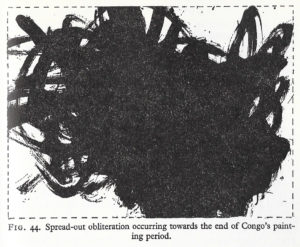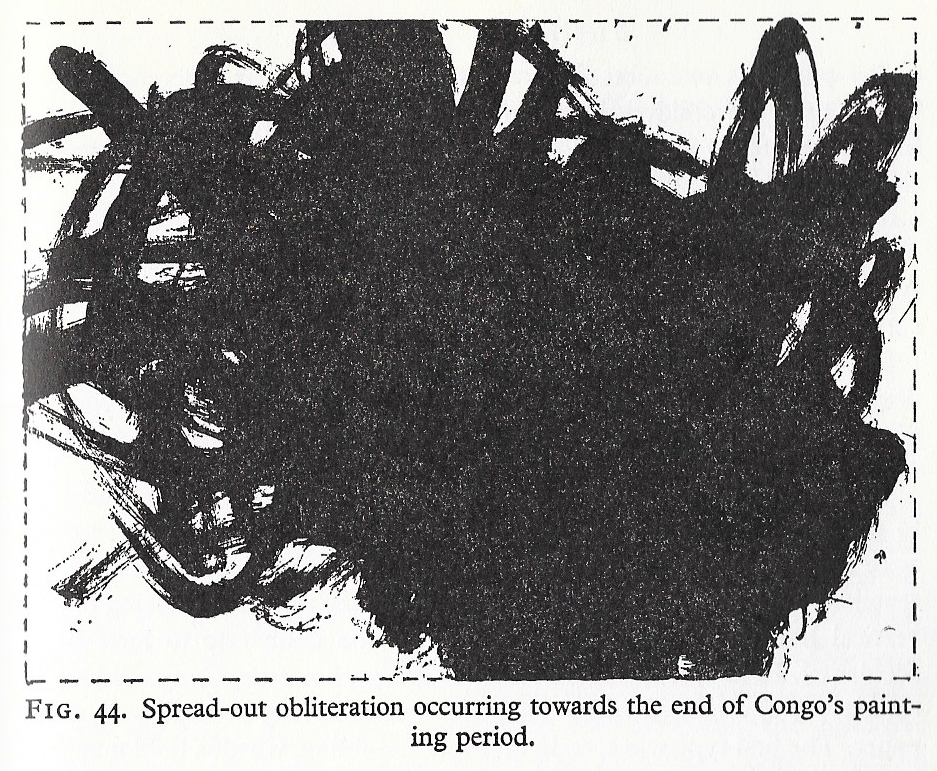In 1997, Thierry Lenain, a senior lecturer in Aesthetics and the Philosophy of Art at the Universite Libre de Bruxelles, Belgium, published the book Monkey Painting. Lenain was familiar with Desmond Morris’ work with Congo in The Biology of Art, but after conducting his own research into the field of primate visual behavior, he had developed an alternate theory as to the motivation of the infrahuman artists. According to Lenain, the ape paintings are aesthetic objects, but not in the way Morris had thought.
Where Morris saw a balanced offset figure, Lenain saw an interrupted space; a marked figure represented an annihilation of form; the covering of a sheet of paper became the systematic disruption of the pictorial field.30
There was some anecdotal support for this position. Morris himself had noted Congo’s tendency to create forms then fill them in, and later in Congo’s “career” a tendency to completely obliterate all imagery within a composition.31

From The Biology of Art, p.133.
Congo was not alone in this behavior. Alpha, too, would mark the page, each cluster over the last, until the page was filled. Then, as a coup de grâce, she would tear the page to shreds.32
To Lenain, the destructive actions of these animals are natural in the broader context of their behavior. In the wild, Lenain contends, much of the play that primates engage in is disruptive: play fighting with conspecifics helps young primates to assess their strength relative to others, and to learn their position in the social hierarchy with much less danger of serious bodily harm; breaking sticks and vines helps them to test the limits of the materials in their environment, as well as their balance and perception; tactile and oral handling of small objects establishes whether those things are good to eat, or could be used to make a tool. Perhaps their interventions in the pictorial field are natural outgrowths of these play behaviors: “art as play.”
This theory does not negate all of Morris’ findings. Disruption of the composition necessarily constitutes a formal awareness of its aesthetic properties. To disrupt, they must first analyze what forms and patterns are present in the pictorial field: thus, the apes are demonstrating a sense of order and pattern.
Unfortunately, these theories represent two hypotheses with the same prediction, and scientifically, it is impossible to come to a conclusion without more data.
30 Lenain, p. 146.
31 Morris, p. 133.
32 Lenain, p.147.
